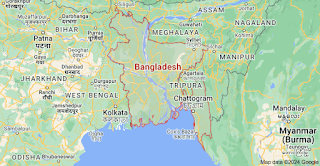Bangladesh: A Tapestry of Resilience and Diversity
Nestled in the lush delta of the Ganges-Brahmaputra-Meghna river system, Bangladesh stands as a testament to resilience, cultural richness, and remarkable development against the backdrop of challenges. With a population exceeding 160 million people, it is one of the most densely populated countries globally, yet it boasts a diverse tapestry of languages, religions, and traditions.
Geography and Environment:
Bangladesh’s geography is defined by its low-lying plains and river deltas, making it highly susceptible to flooding and other natural disasters. However, this fertile land also supports a thriving agricultural sector, contributing significantly to the nation’s economy. The Sundarbans, the world’s largest mangrove forest and a UNESCO World Heritage Site, stands as a symbol of Bangladesh's rich biodiversity and environmental significance.
Economic Progress:
Despite facing numerous challenges, Bangladesh has made significant economic strides in recent decades. The garment industry, in particular, has propelled the country’s economy, making Bangladesh one of the world’s largest exporters of textiles and garments. Additionally, the microfinance sector, pioneered by institutions like Grameen Bank, has empowered millions of Bangladeshis, particularly women, by providing access to credit and financial services.
Social Development: Bangladesh has achieved notable progress in social development indicators, including education and healthcare. The country has made significant strides in reducing poverty and improving access to basic amenities, such as clean water and sanitation. Moreover, Bangladesh has made impressive gains in gender equality, with women actively participating in various sectors of society, including politics, education, and the workforce.
Cultural Heritage: Bangladesh’s cultural heritage is a rich tapestry woven from diverse influences, including Bengali, Muslim, Hindu, and indigenous traditions. The country is renowned for its vibrant festivals, such as Pohela Boishakh (Bengali New Year), Durga Puja, and Eid-ul-Fitr, which showcase its cultural vibrancy and communal harmony. Additionally, Bangladesh has a rich literary heritage, with luminaries like Rabindranath Tagore and Kazi Nazrul Islam leaving an indelible mark on world literature.
Challenges and Future Prospects: Despite its progress, Bangladesh faces numerous challenges, including climate change, political instability, and socio-economic disparities. Rising sea levels threaten to engulf coastal areas, exacerbating the plight of millions of vulnerable communities. Moreover, political polarization and occasional unrest pose challenges to democratic governance and economic stability.
However, Bangladesh is not without hope. The country’s young and dynamic population, coupled with its entrepreneurial spirit and resilience, bodes well for its future. Moreover, Bangladesh has emerged as a global leader in climate change adaptation and disaster resilience, pioneering innovative solutions to mitigate the impacts of environmental challenges.
In conclusion, Bangladesh’s journey is a testament to the power of resilience, diversity, and determination in overcoming adversity. As the country continues to navigate its path towards progress and prosperity, it stands as an inspiration to the world, showcasing the transformative potential of perseverance and unity in the face of challenges.




